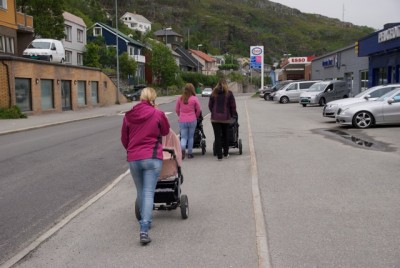Norway has long prided itself on having generous maternity and paternity leave and other social welfare programs aimed at encouraging population growth. Fresh statistics, however, show that the birth rate has fallen in recent years, and that can cause problems for the sustainability of the social welfare state itself.

State statistics bureau SSB (Statistics Norway) has released figures showing that 58,890 babies were born in Norway last year: 30,386 boys and 28,504 girls. That resulted in a fertility rate of 1.71 children per woman.
The births compare to 61,807 babies born in 2009, when Norway’s overall population was lower and before the migration wave from Europe and refugee influx occurred. At that time, the fertility rate was 1.98 children per woman.
In 2006, the total number of births amounted to 58,545. That yielded a fertility rate of 1.90 children per woman, according to SSB. It reported that while fertility rates have declined every year since 2009, Norwegian women are also steadily older when they have their first child. Those aged 30-34 are now having the most children.
Researchers point to the finance crisis in 2008-2009 and the collapse in oil prices in 2014 as reasons for the fall-off in birth rates. Norway tackled the finance crisis well and is already recovering from the oil price dive, but poorer economic outlooks often lead to a decline in births. That may explain, reported news bureau NTB last week, why the birth rate was lower last year than it was in the top year of 2009.
Last year’s rate of 1.71 compares to 1.75 in 2002, before maternity and paternity leave were extended and before Norway’s economic boom based on once-soaring oil prices began. Trude Lappegård of SSB told NTB that the agency’s research shows that local unemployment rates since have had greater negative consequences on the birth rate. Women apparently held off on having both their first and third child, according to Lappegård.
Both Lappegård and her fellow researcher at SSB Lars Dommermuth wrote in a commentary in newspaper Aftenposten last week that Norwegian officials can’t expect high birth rates among today’s youth. Even the “world’s best family policies” can’t fully compensate for changes in the labour market and greater economic uncertainty.
The population has been rising, based largely on immigration, but it’s ageing as well, the SSB researchers noted. Today’s young residents of Norway face more uncertainty in the job market. Despite the prospects of paid parental leave, financial grants at the time of birth, monthly welfare payments for all children irrespective of family income levels, subsidized day care and generally family-friendly employers, most women wait ever longer to have their first child, if they choose to have children at all.
“The relatively steep decline in fertility rates in Norway is surprising,” Lappegård and Dommermuth wrote. “Norway is known worldwide for its good and generous family poilicies that make it easier for two parents to combine family life and careers.
“There are many signs that the family policies may have contributed to keeping fertility rates relatively high during good economic times,” they added. “It’s of course possible that more births can occur at a later point in time. But we can’t expect high birth rates in the future. The goal should be that young people are able to have the children they want.”
newsinenglish.no/Nina Berglund

